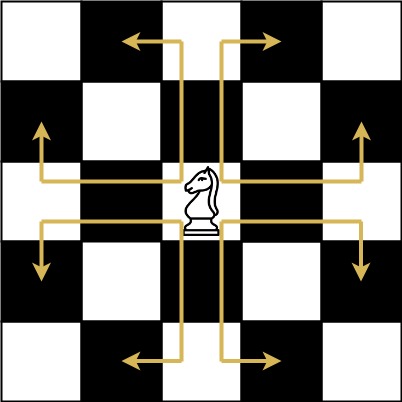Package g0901_1000.s0935_knight_dialer
Class Solution
java.lang.Object
g0901_1000.s0935_knight_dialer.Solution
935 - Knight Dialer\.
Medium
The chess knight has a **unique movement** , it may move two squares vertically and one square horizontally, or two squares horizontally and one square vertically (with both forming the shape of an **L** ). The possible movements of chess knight are shown in this diagaram:
A chess knight can move as indicated in the chess diagram below:

We have a chess knight and a phone pad as shown below, the knight **can only stand on a numeric cell** (i.e. blue cell).

Given an integer `n`, return how many distinct phone numbers of length `n` we can dial.
You are allowed to place the knight **on any numeric cell** initially and then you should perform `n - 1` jumps to dial a number of length `n`. All jumps should be **valid** knight jumps.
As the answer may be very large, **return the answer modulo**
109 + 7.
**Example 1:**
**Input:** n = 1
**Output:** 10
**Explanation:** We need to dial a number of length 1, so placing the knight over any numeric cell of the 10 cells is sufficient.
**Example 2:**
**Input:** n = 2
**Output:** 20
**Explanation:** All the valid number we can dial are [04, 06, 16, 18, 27, 29, 34, 38, 40, 43, 49, 60, 61, 67, 72, 76, 81, 83, 92, 94]
**Example 3:**
**Input:** n = 3131
**Output:** 136006598
**Explanation:** Please take care of the mod.
**Constraints:**
* `1 <= n <= 5000`-
Constructor Summary
Constructors -
Method Summary
-
Constructor Details
-
Solution
public Solution()
-
-
Method Details
-
knightDialer
public int knightDialer(int n)
-